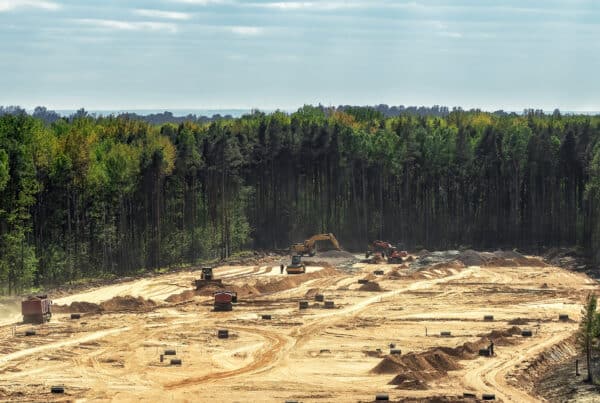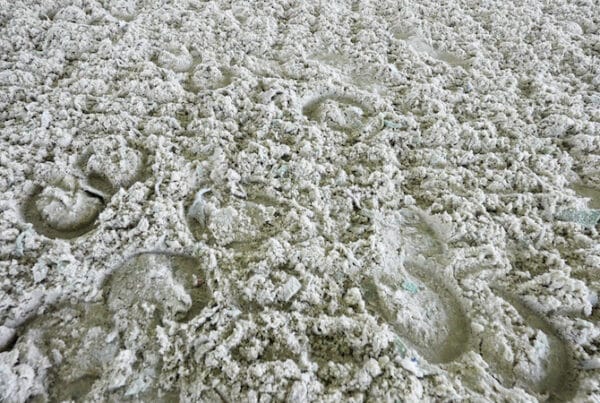By Hilary Clayton and Heidi Zorn
We have been looking at horse hoof prints in surfaces for several years now. When Premier Equestrian started modifying and manufacturing additives for equestrian surfaces, there was a lot of research taking place. The large divots that we have all seen in most arenas told a very interesting story about the lack of support and stability that these sand-only arenas were not providing.
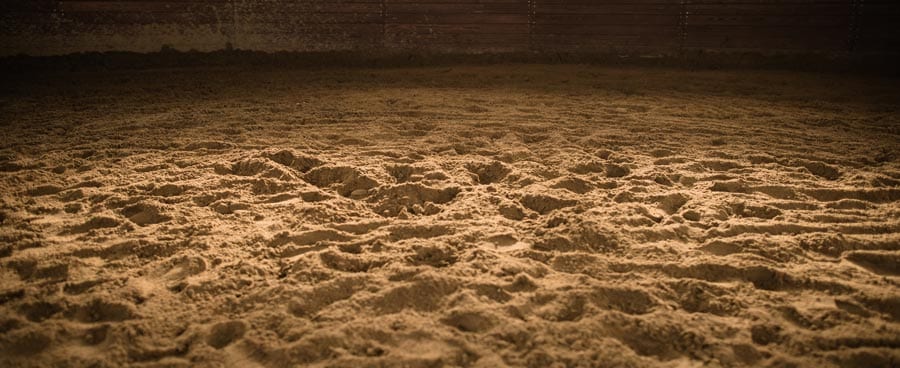
Excessive divots in an arena surface reveal instability as well as lack of traction and grip.
Through our research with our panel of experts, including Dr. Hilary Clayton, we have been able to dial in what an optimum surface should look and feel like for the Hunter/Jumper, Dressage and Eventing disciplines. Other types of disciplines will require their own unique type of surface for the types of movements required.
We have taken the five surface characteristics (Firmness, Cushion, Cupping, Rebound, Grip) and produced a surface we can duplicate consistently. By using the correct sand, footing additive, water and proper maintenance, Premier surfaces will have lots of healthy hoof prints.
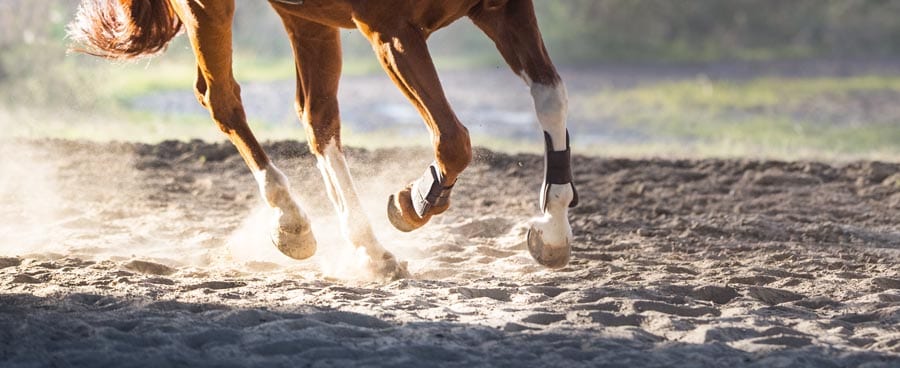
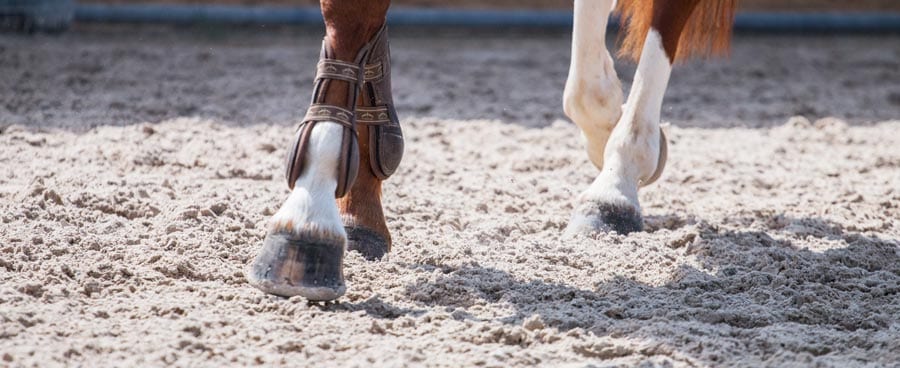
Good footing allows horses to go on top of the surface rather than in it.
Signs of a Healthy Hoof Print
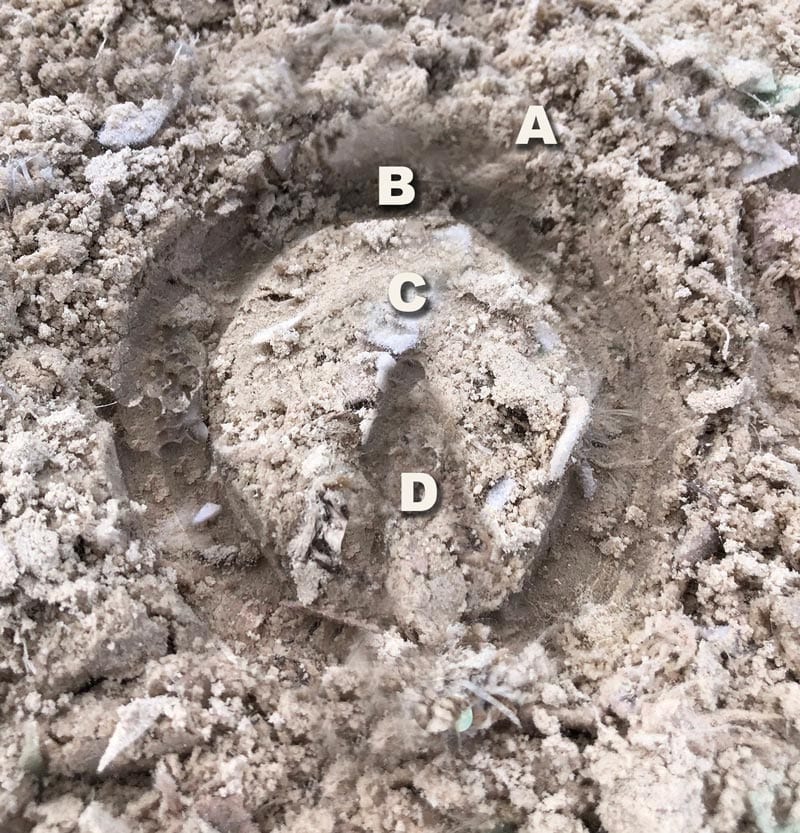
Shear (A)
The elongation of the hoof print indicates that the hoof has slid forward through the surface material. Although there is only a small amount of sliding, it is enough for the ground to absorb a majority of the longitudinal concussive force during landing and loading.
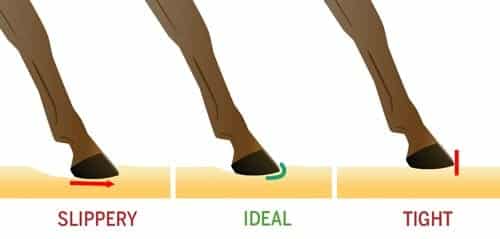
Toe Dip (B)
The surface allowed the toe to dip, yet provided sufficient support and shear resistance for the hoof to push off without slipping. Toe dip reduces stress on the deep digital flexor tendon and its check ligament, and helps the horse to not fall on his forehand. On a compacted surface the toe cannot dip in during push off, which increases tension in the deep digital flexor tendon and puts extra pressure on the navicular bone and bursa.
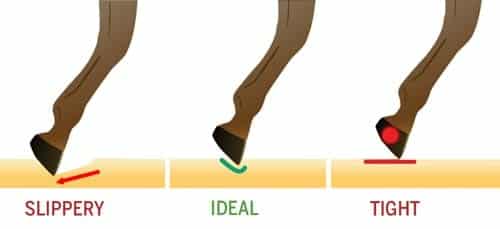
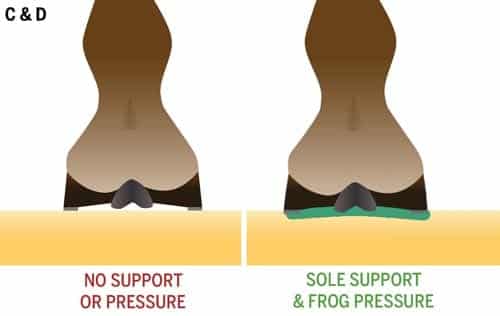
Sole Support (C)
The footing surface contains some voids, which prevents too much compaction and allows for expansion into the hoof cavity and collateral grooves. This type of surface supports the sole of the hoof and stimulates the foot to grow a thicker sole that provides additional support to the coffin bone. A compacted or dense surface will leave a void between the sole and the ground, so there is no support on the underside of the sole when the coffin bone is loaded by the weight of the horse. The sole is not stimulated to thicken, resulting in thin soles that expose the coffin bone to injury.
Frog Pressure (D)
Here you see the imprint of the frog as it indents the surface. The support provided to the entire solar surface of the hoof enables the hoof mechanism to do its job. The hoof mechanism supports the circulatory system. Each time the hoof is loaded, blood rushes into the hoof. When the hoof is released, blood is pushed back up the leg. A healthy surface will support the hoof mechanism and the entire circulatory system.
©Premier Equestrian


